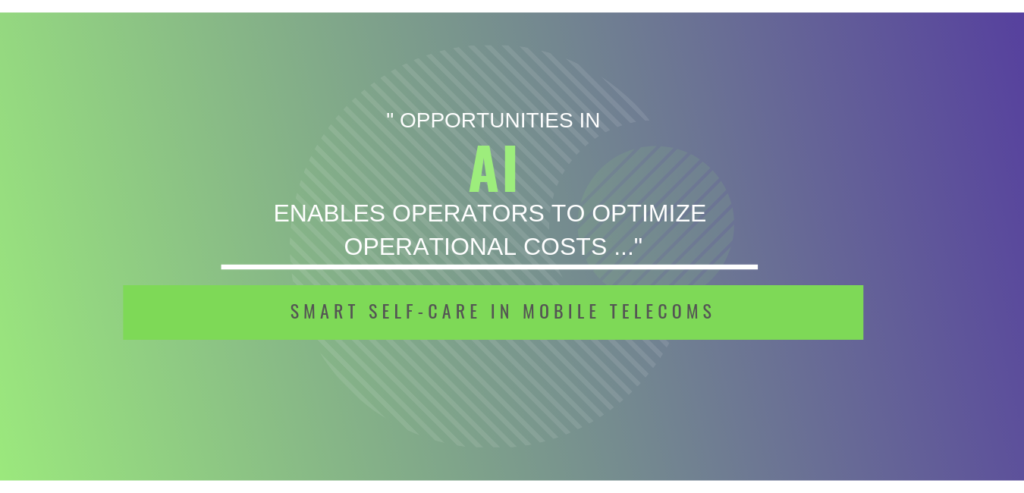Traditional mobile telecommunication in the 90’s was all about Voice and SMS services. Today Communications Service Providers (CSPs) offer a proliferation of mobile telephony services that transcend voice and SMS services. These include data, mobile money, FTTx, video content and streaming services, etc. In this regard, modern CSPs are regarded as Telecom, Media and Technology (TMT) players due to the extensible application of their data/broadband infrastructures to leverage internet-based services. Several CSPs are already offering a host of IOT based services in home security, health, vehicle and fleet tracking, smart cities, farming and livestock tracking… the list goes on!
This proliferation of upstream services has been necessitated by the saturation in the uptake of traditional services, (in some markets mobile penetration is almost at 100%) as businesses strive to grow revenues and remain viable in the digital world. However, a key challenge for many CSPs is to continuously enhance operational efficiencies as a supporting strategy, for the adoption of upstream digital services.
This article explores the implementation of AI as an enabler for operational efficiency.
There are many areas where CSPs can take advantage of Artificial Intelligence (AI) with several opportunities that can enable operators to optimize their operational costs.
For now, I’ll only focus on a few areas that I feel can benefit CSPs. These being:
- Smart self-care
- Proactive network monitoring and optimization
- Fraud prevention
Smart Self-care
Let’s look at Self-care first and why it is important for mobile operators:
- >It enables customers to conveniently and easily get assistance for critical services.
- > It enables CSPs to exercise demand control for their customer touch points (such as call centres) thereby ensuring optimum use of resources.
CSPs allow their subscribers to use common VAS channels such as SMS, USSD, IVR, and most recently mobile apps to interact with them. The current challenge is, as CSPs offer more products and services there is a corresponding increase in the need for subscribers to interact with the CSP. This puts substantial pressure on CSPs to increase their self-care capacities. For IVR and USSD, customers are forced to remember many short-codes and browse through numerous menu options in order to find what they are looking for. This can become very frustrating for the customer. Imagine the following scenario where Grace is a mobile subscriber and from CSP X dials the IVR short-code 123 to hear the following:
IVR machine: Hello Grace, how may I help you?
Grace: I’d like to check for my airtime balance please
IVR machine: Your airtime balance is $ 2.50. Is there anything else you would like me to assist you with?
Grace: Yes, I would like to purchase a data package
IVR machine: Would you like a daily, weekly or monthly data package?
Grace: I would like a weekly data package
IVR machine: These are the available weekly data packages for you. <Option 1> < Details>, <Option 2> < Details>, <Option 3> < Details>
Grace: Please activate <Option 2> < Details>.
IVR machine: The package is activated. Is there anything else I can help you with?
Grace: No.
IVR machine: Ok. Thanks for using CSP X self-care services.
Wouldn’t this offer a much better experience?
With current AI capabilities, this is now possible.
In the above example, there are no “fixed menus” in which a subscriber has to browse through or DTMF options they need to remember. The subscriber just requests for information and the platform is able to query the required system for the requested information and give an appropriate response.
So what are some of the practical applications that CSPs can explore when looking at AI for self-care solutions in telecoms?
These would include:
A. Smart IVR
B. Virtual Private Assistants
C. Chat Bots
A. Smart IVR: The above conversation is an example of a Smart IVR capability. Using AI, a Smart IVR is able to understand requests from a subscriber and respond back accordingly. With AI based Smart IVRs, the subscriber is able to get access to information much faster since it eliminates the need to browse through many menu options. For the CSP, a smart IVR can help save immensely on network resources (such as ports) since customers will now be spending less time querying for information on the IVR. In addition, the efficiency and intelligence offered by the smart IVR could significantly reduce calls hitting the call centre resulting in cost savings, as most queries are handled through self-care. For the customer, this will provide increased customer satisfaction as it offers much shorter wait times increase efficiency due to automatic answers to frequent questions.
B. Virtual Private Assistants (VPA): Apple, Google, Microsoft, Amazon all have a VPA. Why do these giant tech companies think it’s an important capability to have? It’s because they understand that oral communication/speech is the most common and natural form of communication. Before we even learn to read or write we have learned to speak. Due to technological limitations, we have been forced to use text for the longest time. Therefore, now that technology has finally enabled machines to “speak” shouldn’t we be running for it? VPAs enables customers to easily request information from their CSPs verbally through means of speech recognition applications on their phone. The speech adaptor can be integrated into the operator’s backend systems in order to access customer data and profile information.
C. Chatbots: I believe we have all used chatbots one time or another, whether we knew it or not. Chatbots, as the name suggests, are web-based bots whose primary work is to chat people online. Chatbots have become very common today for automating customer service inquiries and routing customers or prospective buyers to the right personnel. CSP can use these as the first point of contact for their online customers and once the necessary information is provided, the customer can be redirected appropriately. The bot is intelligent enough to identify the type of query being made and take the required step.
In my next blog, I’ll be looking at how CSPs can take advantage of AI capabilities to achieve proactive network monitoring and optimization.
Author: Grace Kimani
Telecommunications and IT Consultant and Expert, Global Wavenet (Africa)
Contact Grace on LinkedIn here.
Request more info on Wavenet’s Self-care Solutions:
Send us your details here for a callback.








